High-Tech e-Bikes Become the Perfect Alternative to Public Transportation
Innovations from the electric vehicle world, like refined battery systems, sensor-rich technologies, and data gathering capabilities, have helped electric bicycle sales boom in 2020.
Electric bicycle manufacturers expected 2020 to be a subdued year, as tariffs pushed up prices on their products. Instead, it has turned out to be a record-setting time for sales. People have taken up bicycling in droves, seeking alternatives to gym exercise or a new family activity during a time of limited options. In fact, retailers around the world are reporting that they can’t keep up with demand. The renewed interest in biking has extended to electric bicycles, which have been “one of the winners of the coronavirus crisis,” says Mathias Kalmbach, marketing executive with Würth Elektronik. Sales of electric-assist bicycles, or e-bikes, doubled in May 2020 over 2019 numbers, which were already 90% higher in 1Q2019 than 1Q2018, according to NPD Group research.
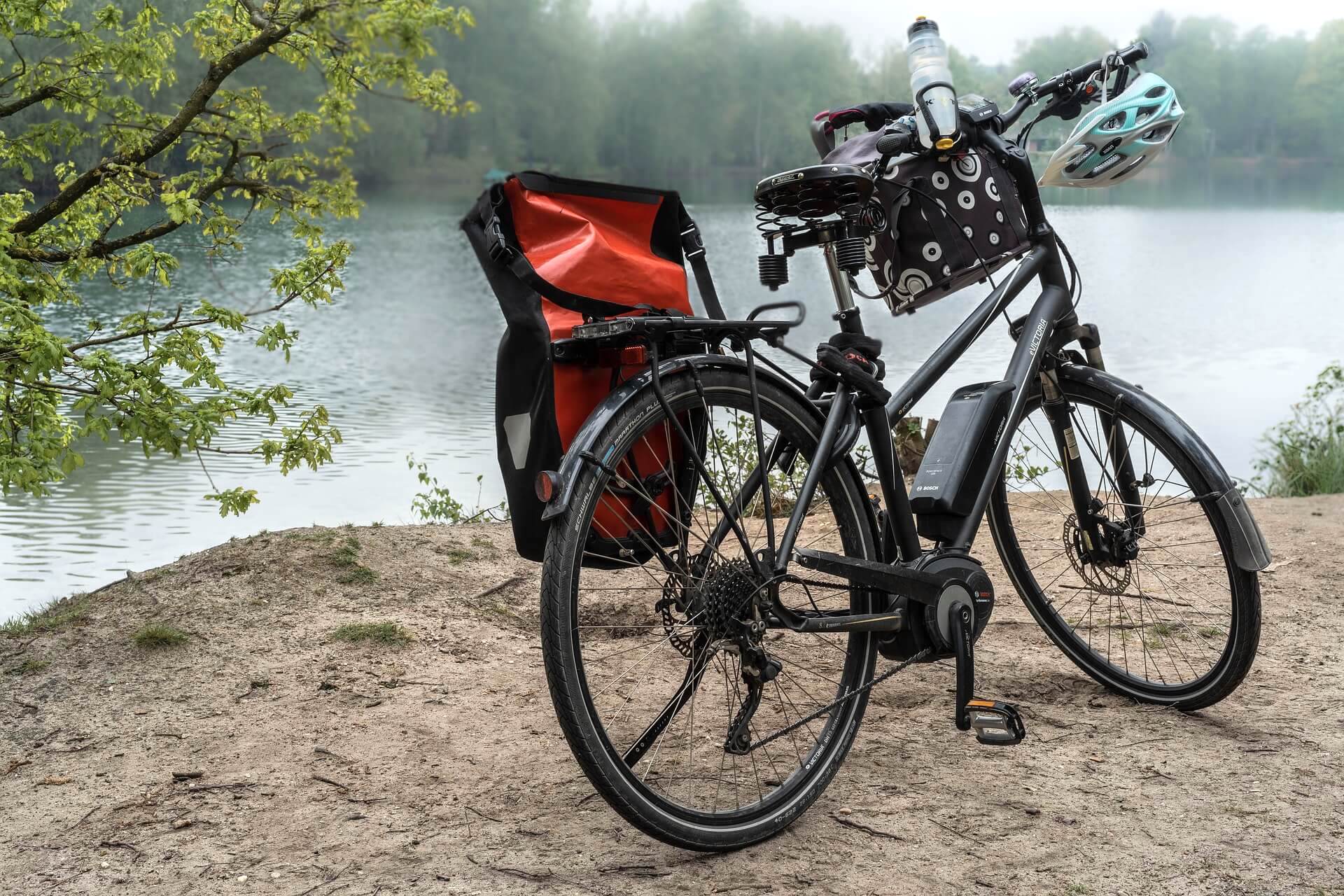
E-bikes are experiencing particular interest from people who previously relied on public transportation and are now reluctant to venture back to buses or trains. Congested traffic and limited parking make cars less feasible for many urban residents, and bicycles come in at an attractive price point compared to cars. Electric pedal-assist features enable riders of a wider range of abilities to enjoy the exercise benefits of biking, while tapping into additional speed and power as needed for hills or longer commutes. Continuous advancements in battery technologies that extend range and expand charging capabilities have made electric bicycles a solid transportation option.
Electronics Inside
E-bikes are in a period of rampant design experimentation. Yamaha, the Japanese automotive and motorcycle company, pioneered the pedal-assist e-bike in the 1980s, and since then, automakers like BMW, Volkswagen, Peugeot, and General Motors have released original takes on the concept, integrating electric drivetrain concepts from their automotive lines. Motorcycle and electric scooter companies are also innovating scaled-down two-wheelers for the bike market. Triumph, a UK-based motorcycle company, recently introduced its first electric bicycle, featuring a Shimano electric drivetrain, a lithium ion battery, and an impressive range of 90 miles on a single charge. California-based CSC Motorcycles introduced an electric bicycle that can travel up to 45 miles (72km) on a single charge, by comparison, but it’s budget price makes it widely accessible. Traditional pedal-powered bicycle companies have their own electric models too, and startups that focus exclusively on electric models, some with features such as foldability or even inflatability, have joined this expanding market. All of these makers require connectivity features to enable the electric motor, drivetrain, and battery attachment and charging systems. More enhanced models also include integrated LED lighting, displays, and sensors, which play a role in torque, cadence, and balance systems, as well as biometric data gathering features, and also require rugged, high-reliability connectivity.
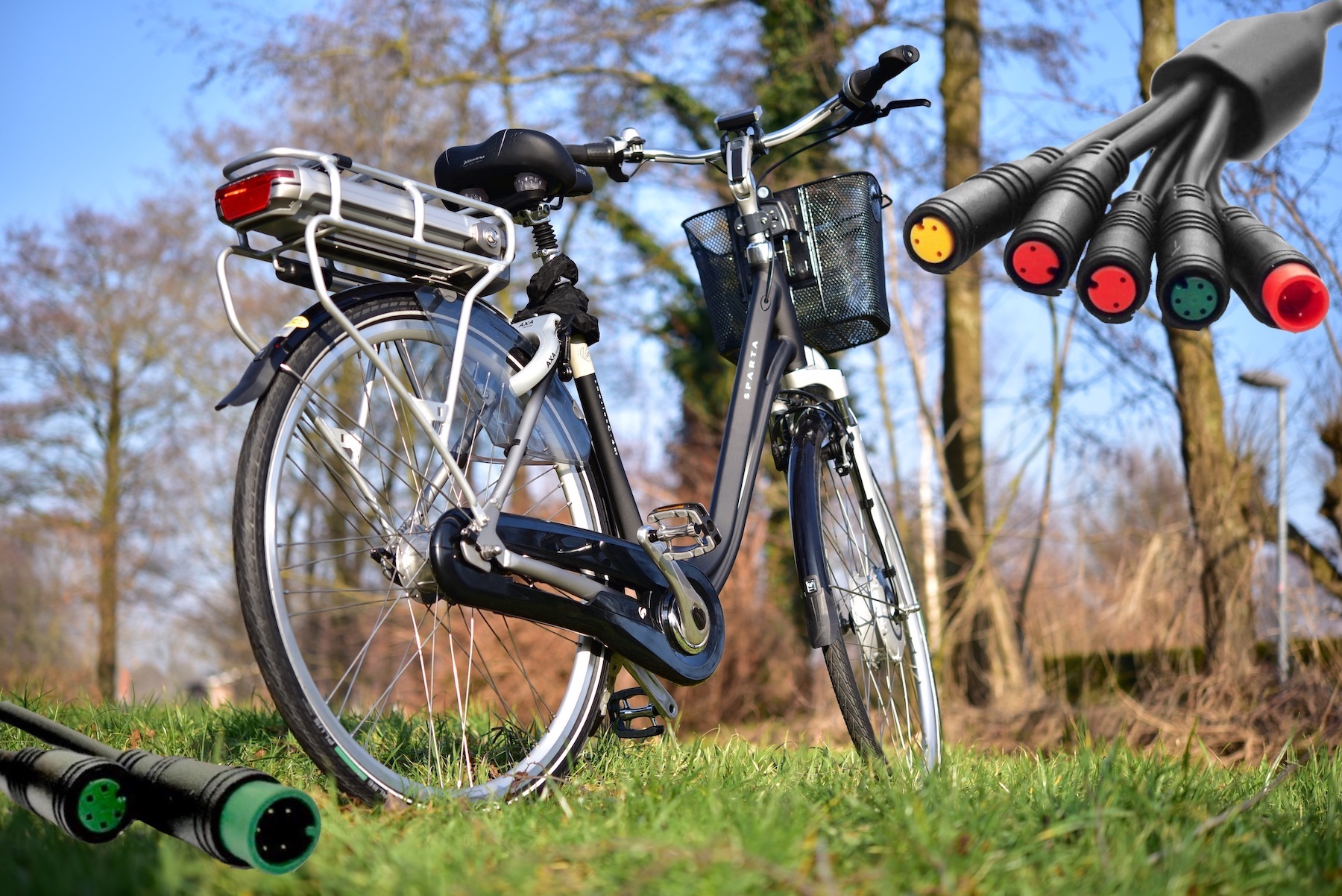
e-bikes are a solid transportation option, but connectivity features offer riders more than just a ride home. Join Tek’s waterproof cable assemblies help integrate advanced electronic features, such as battery power, balance sensors, and data collection, into electronic bicycles that also draw on human power.
With more integrated electronics features, more e-bikes are joining the Internet of Things (IoT). Bosch, a leading maker of battery systems for e-bikes, has designed a cloud-based system that enables users to lock their bike and disable its motor, navigate routes in real time, and monitor health data with their phone. IoT data also allows bike-share companies to monitor, locate, and maintain units in the field. In Smart City networks, cars and e-bikes will be able to “see” each other and avoid accidents. These systems will draw upon a range of existing and specialty connectivity solutions to accomplish their goals.
e-Bikes Inspire Component Design
Join Tek, a cable manufacturer that supplies specialty cable assemblies to the e-bike market, designs its products with ruggedization to withstand the conditions bicycles endure on the road. Riders may encounter rain or snow, dust and debris, and summer and winter temperature extremes, in addition to constant vibration and occasional shocks. Emilia Lee, Join Tek’s technical administrator, said waterproofing is a critical feature for connectors and cables used in e-bikes. Join Tek’s waterproof cables are used by many e-bike manufacturers, such as Giant, which offers electric road, mountain, gravel, and commuter e-bikes.
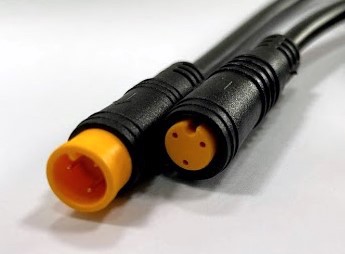
Join Tek’s double-sealed connector system prevents moisture from reaching a mated connector pair.
The company designed a double-layered PVC plastic connector housing to prevent water ingress. “There is a convex shape on the edge of the connector and a concave-convex shape design inside the female connector to make a secure, sealed connection between the male and female connectors,” she said. “The first advantage of this design is to make it well-matched with the female connector. The second advantage is if water sneaks into the gap between the two mated connectors, this design feature helps prevent the water from entering the connector and reaching the metal contact area. It is an extra feature that acts just like a speed bump on the road.”
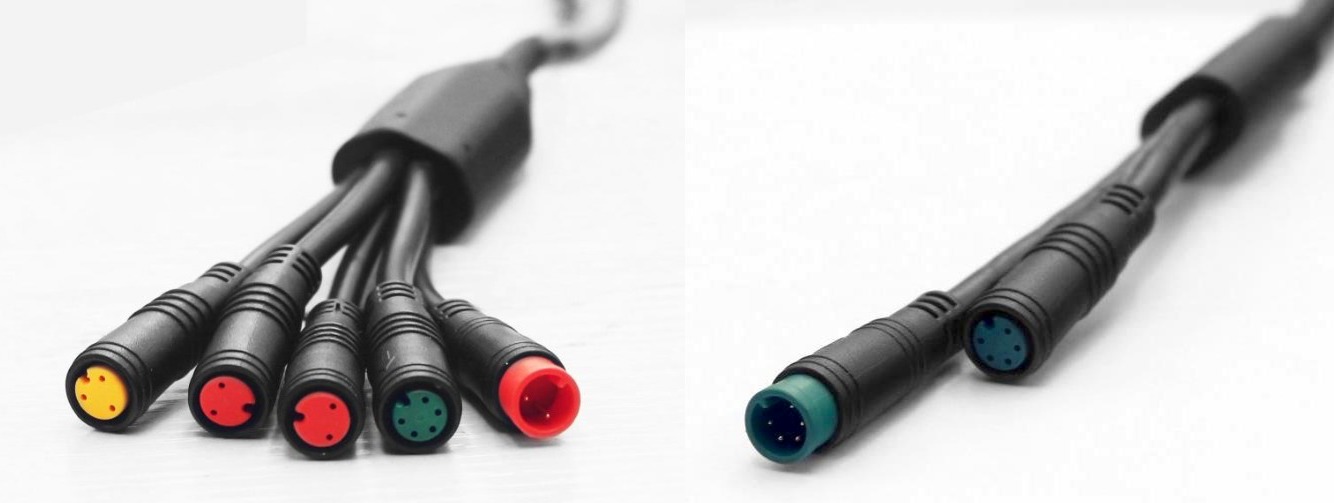
Join Tek’s waterproof cable assemblies are used in Giant’s e-bike lineup, which includes electric road, mountain, gravel, and commuter bicycles. Splitters like these are used to connect the controller with other devices, such as displays, lights, and pedal sensors.
Rosenberger’s RoPD connector was specifically designed for e-bikes, says Guadalupe Chalas, product manager at Rosenberger. “This product is definitely very popular among e-bike manufacturers, along with the RoDC, a four-pin small sealed data connector used for sensor and lighting applications on e-bikes.” RoPD products enable both power and data transmission and their magnetic coupling features make them easy to securely connect in tight spaces or areas of a build where both ends of a connector aren’t visible to the installer, like within a narrow bicycle frame. Luna Cycle is just one e-bike manufacturer that uses Rosenberger RoPD connectors in its charging design. Although e-bikes were the original inspiration for developing this connector, their reliability, durability, and lightweight nature has also made them popular with designers of drones and unmanned military vehicles.
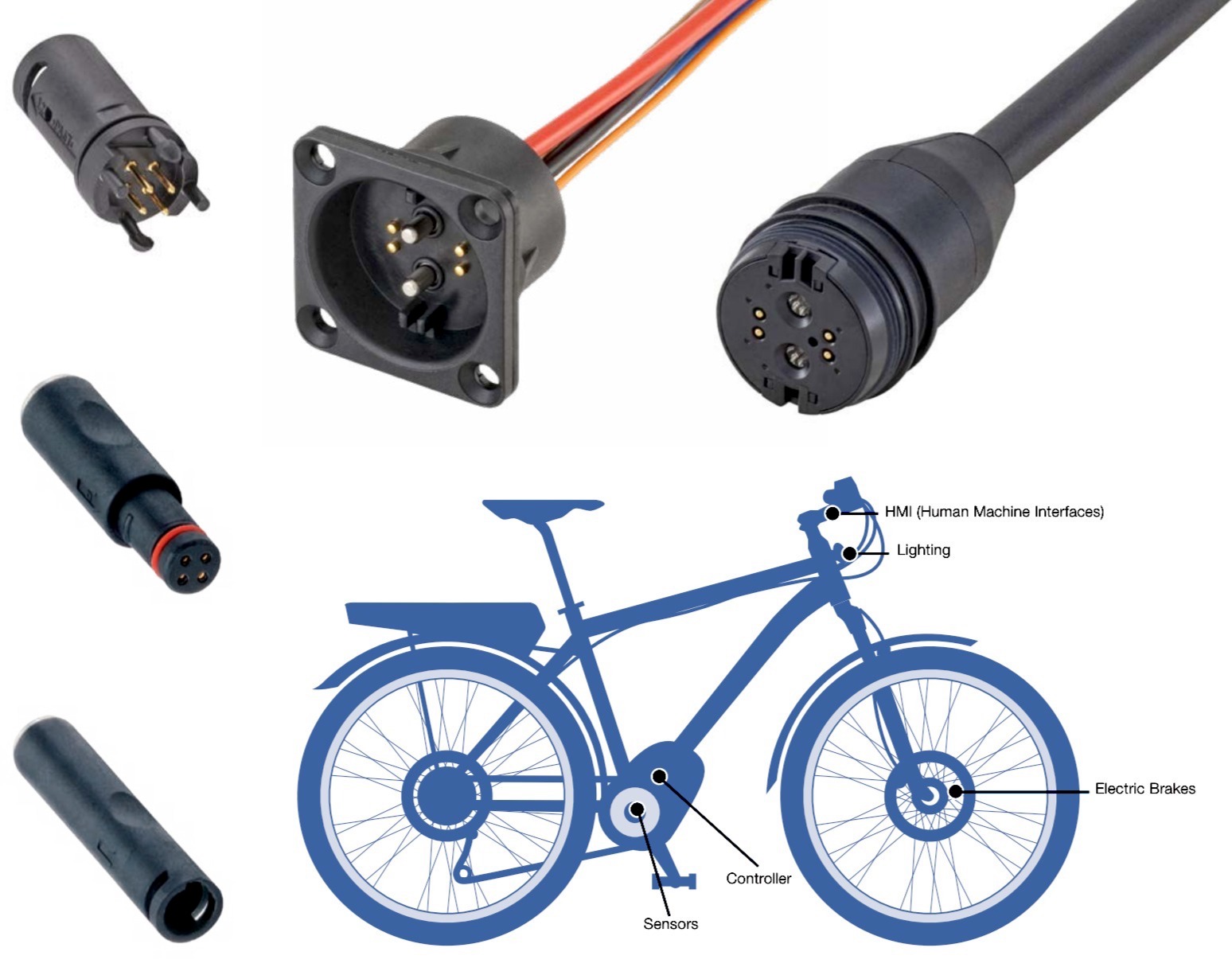
Rosenberger’s RoDC (left) and RoPD connectors (top middle and right) were originally designed for e-bikes, but these lightweight, durable designs are now utilized in a range of high-reliability applications.
Versatile Connectivity
Many electric bicycle manufacturers have adopted or refined connectors, cable assemblies, sensors, and battery technologies that were originally designed for the electric car or motorcycle markets. Now scaled to the needs of the e-bike market, these versatile solutions can serve many small transportation products. Würth Elektronik supplies components for a range of light electric vehicles (LEVs), a designation that includes electric scooters, hoverboards, mopeds, wheelchairs, and bicycles. “These products are mainly adopted for e-bikes from other electric applications,” says Kalmbach, but feature capabilities that are ideal for the needs of bicycles. The components, including connectors and cables for the charging system, lighting, display, drive unit, gearbox (electric shifting), and IoT capabilities, are designed with the same functionality the company offers to electric vehicle designers, but in a smaller, lightweight package that is easier to fit into the trim lines of a bike. Würth Elektronik also partnered with Analog Devices to develop an solar charging station for e-bikes.
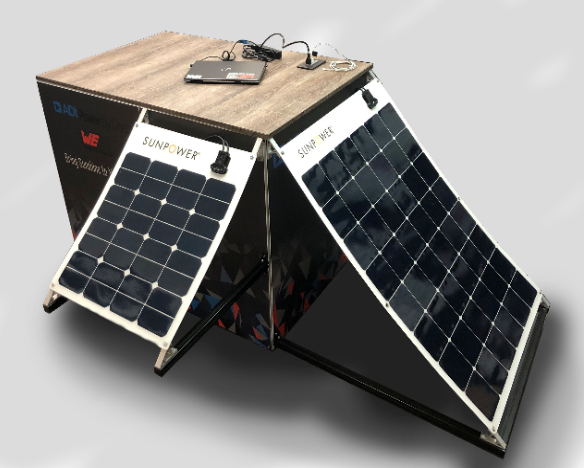
Solar-powered e-bike charging stations provide a clean, autonomous energy source. Würth Elektronik’s components enable these additions to e-bike infrastructure.
TE Connectivity also supplies components to the LEV market, including a range of lighting connectors. Riders of traditional bicycles must attach separate lighting systems and monitor battery levels, but many electric bicycles include integrated front, side, and rear lighting for safety and riding ease. TE’s DEUTCH DTM connectors are sealed and ruggedized, and are available in sizes suitable for low-amperage applications such as e-bikes. TE also partnered with a bike rental kiosk company to create a rugged solution that would minimize interference in busy urban environments. The company’s Corcom V Series EMI Filter is an international solution that keeps kiosks operating smoothly.
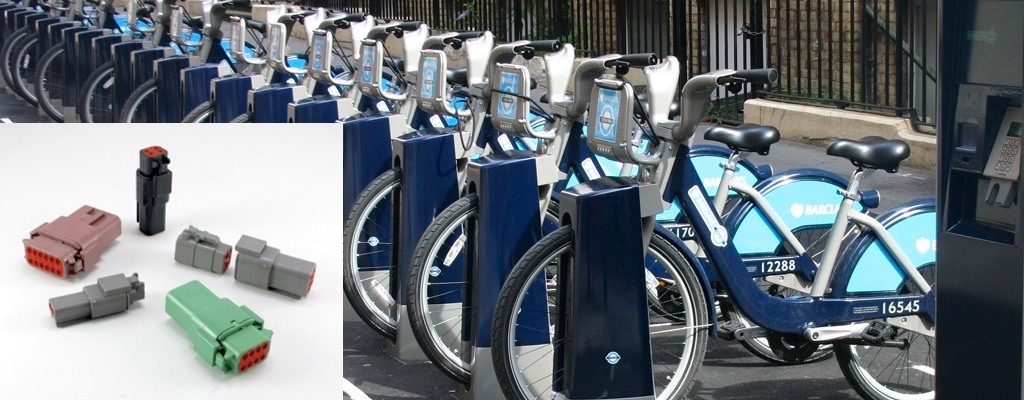
TE Connectivity’s DEUTSCH DTM connectors offer rugged protection against the elements and operating conditions e-bikes must endure on the road and trail.
As more people buy e-bikes for recreation and commuting, the opportunity to design new bike features, charging systems, and other connected transportation infrastructure to support cyclists will increase. This rapidly expanding mode of transportation is a rich area of innovation that adapts existing technologies and inspires versatile new ones.
Like this article? Check out our other Connection Basics, and connected vehicles articles, our Transportation and Wire and Cable Assemblies Market Pages, and our 2020 and 2019 Article Archives.
- Where in the World is Amphenol LTW’s Luc Kan? - April 23, 2024
- TE Connectivity’s Sustainability Efforts Pay Off - April 23, 2024
- What is a VGA Connector? - April 23, 2024





